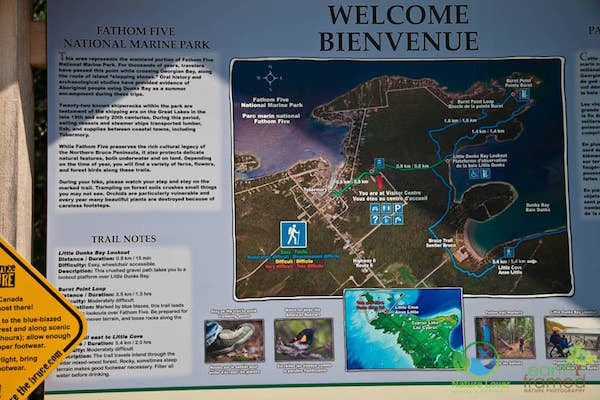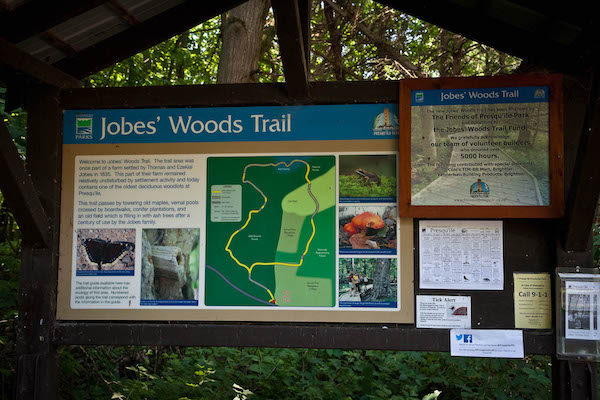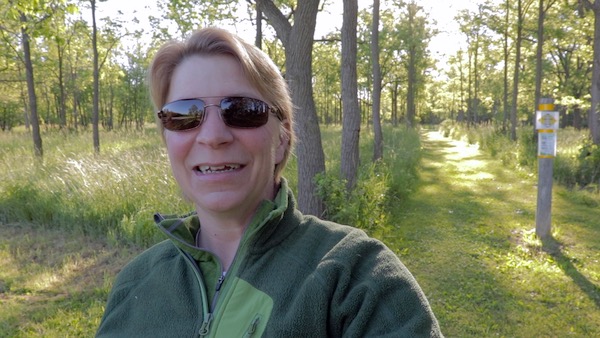Over the years we have participated in the Bruce Adventure Passport which takes ‘explorers’ to various locations throughout the Bruce Peninsula. It’s like a scavenger hunt for locations and it has taken us to some really interesting destinations that we might not have found on our own. Of course there are all the other places that you stop and check out along the way too!
One of those destinations was the Burnt Point Side Trail that is located just outside of Tobermory in the Fathom Five National Marine Park. The park consist mostly of water destination but the mainland section features a Visitor Centre and some trails.
The trail, round trip from the Visitor’s Centre and back is 4.8 kilometres. The first section is wheelchair accessible but most of the trail is fairly rugged, since it definitely part of the Canadian Shield. 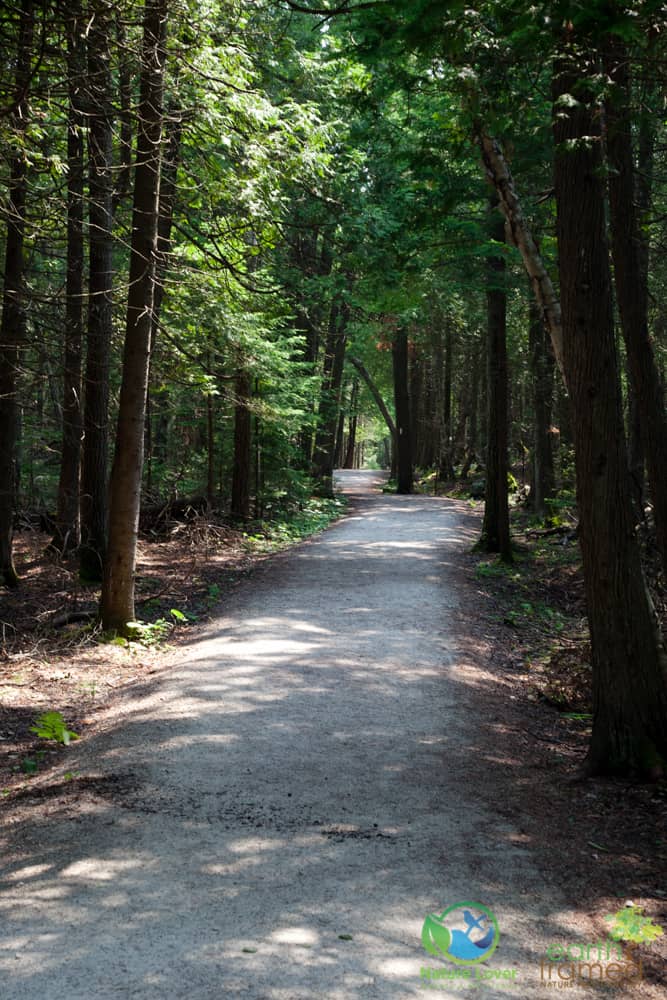
For the first 800 metres anyone can traverse the trail, whether it’s in a wheelchair or pushing a stroller.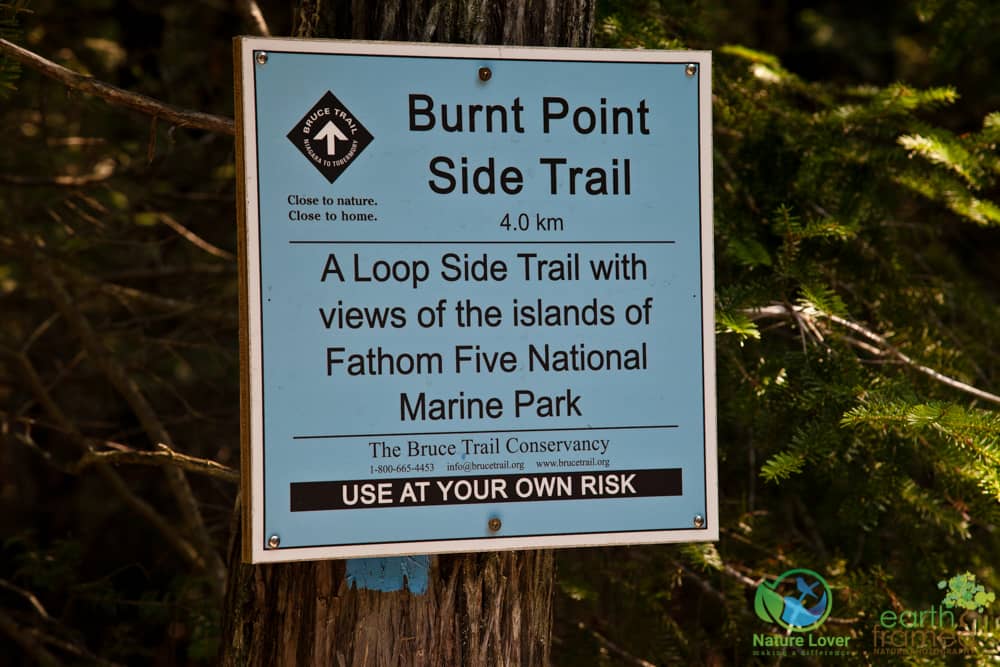
Once you see the Side Trail sign, the trail becomes something completely different – Bruce Trail all the way.The crushed gravel path does lead to a platform lookout for visitors to catch a glimpse of Little Dunks Bay.
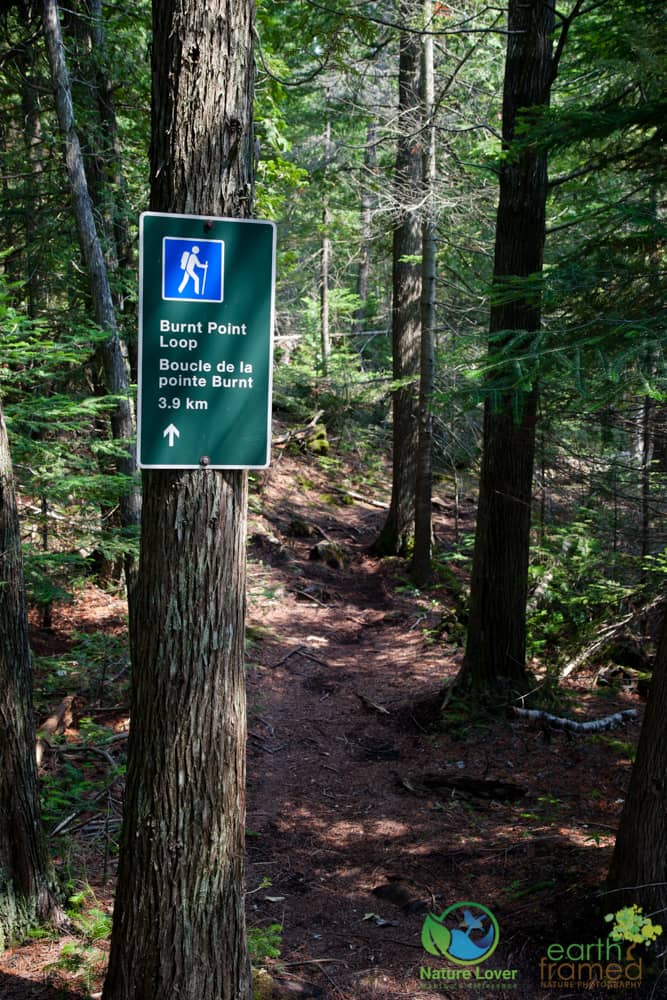
You can see the abrupt change, with roots, rocks and inclines that would not be suitable for wheeled devices or anyone who isn’t sure footed. 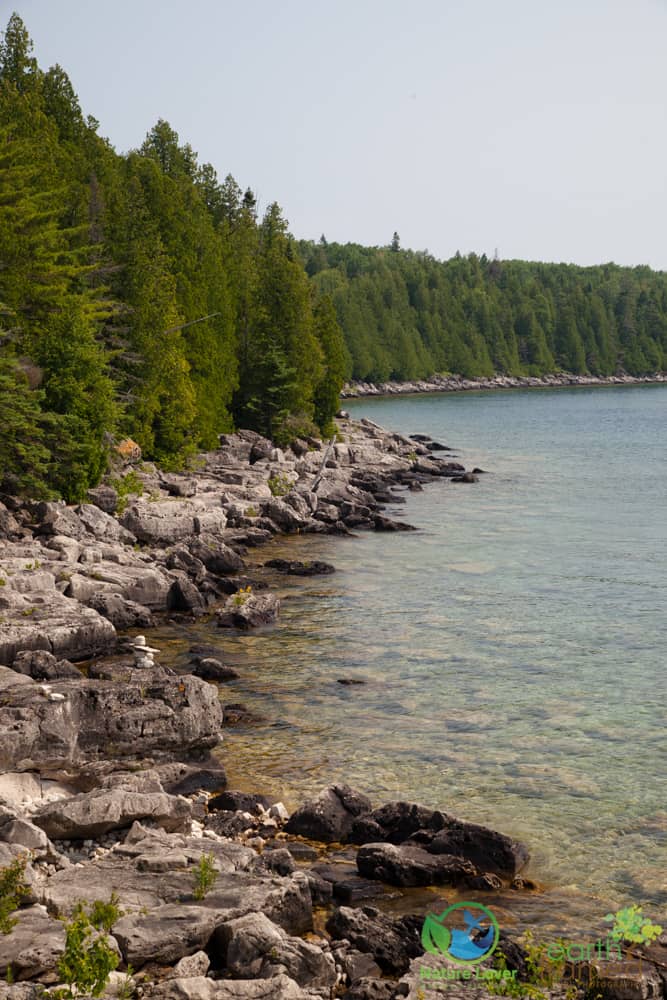
There are many opportunties to see and enjoy the water and shoreline on this trail. You can check out Little Dunks Bay, see the vastness of Georgian Bay and see some of the nearby islands from the point.
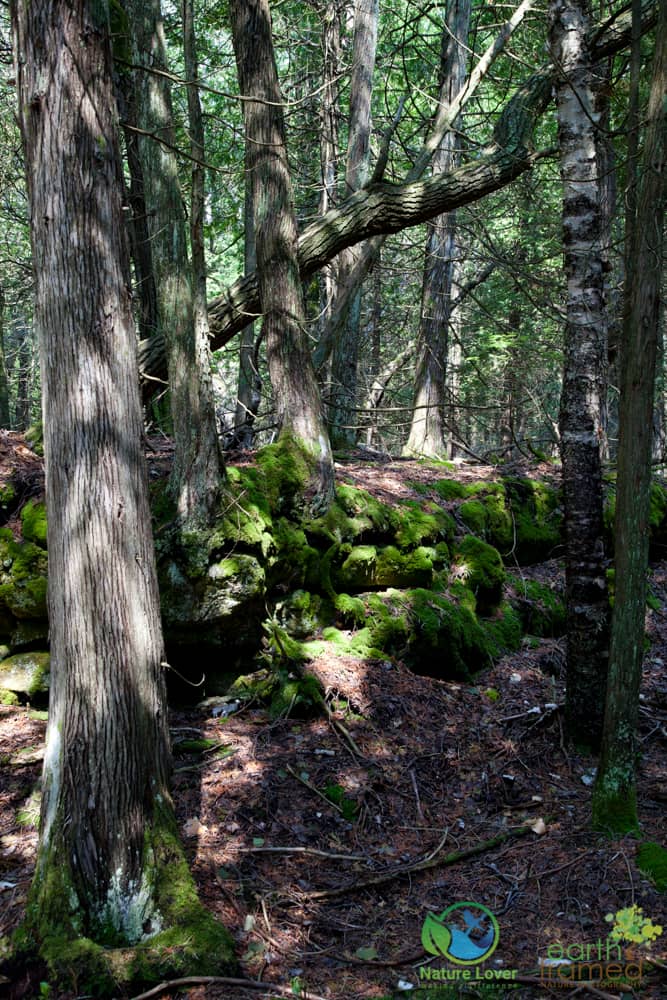
The forest is filled with cedar trees, moss, lichen, ferns and wildflowers. There are also a wide variety of birds to enjoy during your hike.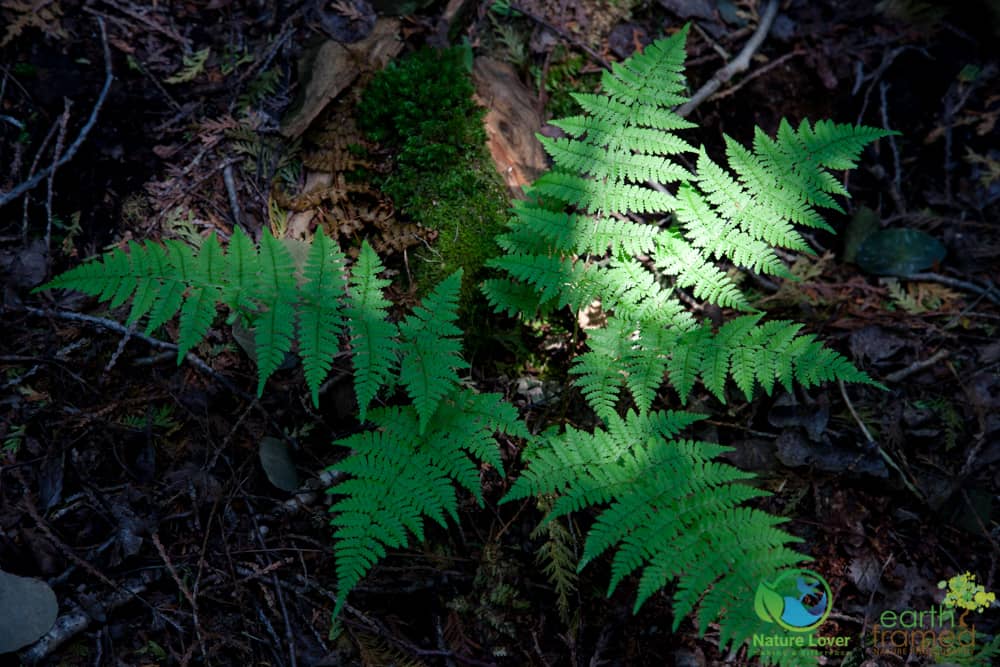
It always amazes me how trees and plant life can survive in such harsh conditions. There is only a small amount of soil that lays on top of the rock and yet forests and plant life thrive in this location, with its harsh winters and hot, short summers.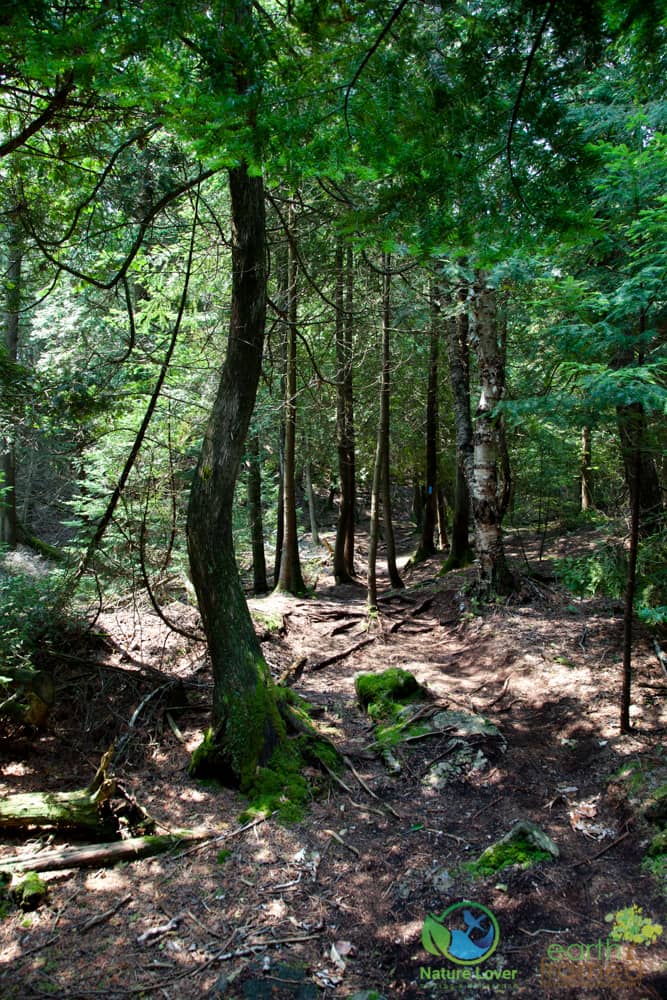
Here is a good shot of what you can expect from the trail. Lots of rocks and roots to avoid while following a blue blaze off in the distance. 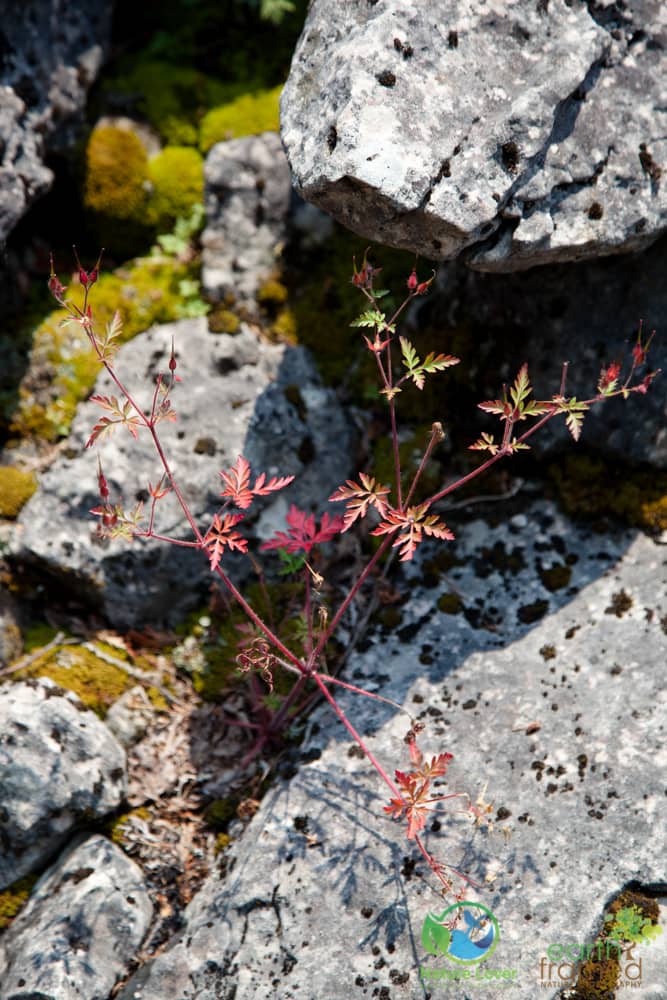
Even in places where it does seem like there is any soil for plants to grow, you’ll still find life. Many plant species will be smaller than usual due to high winds, exposure to the sun and other threats. 
As we reached the shoreline we found a nice spot for Maya to take a dip and to cool off. In 2011 she was still very athletic and agile and had no problem traversing the slippery rocks. The sheltered bay offered a calm area for her to explore without any waves to impede her making her way carefully along the rocky shoreline.
As we got closer to the point, and therefore to less sheltered areas, the waves picked up a bit but it was a very hot, still day. 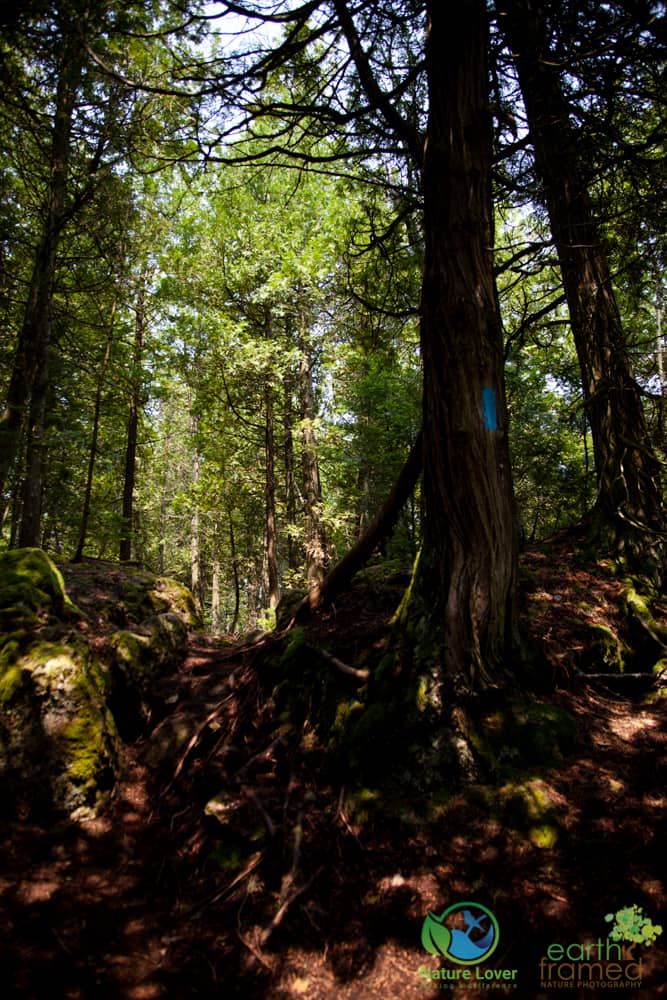
The Bruce Trail and the Canadian Shield have always been very special to me. There is a true sense of being in nature and having to be completely aware of your surroundings. Due to all of the trip hazards, you will find that you spend a lot of your time looking where you are walking and not looking around. Be sure to stop periodically and carefully take a good look at this special place. 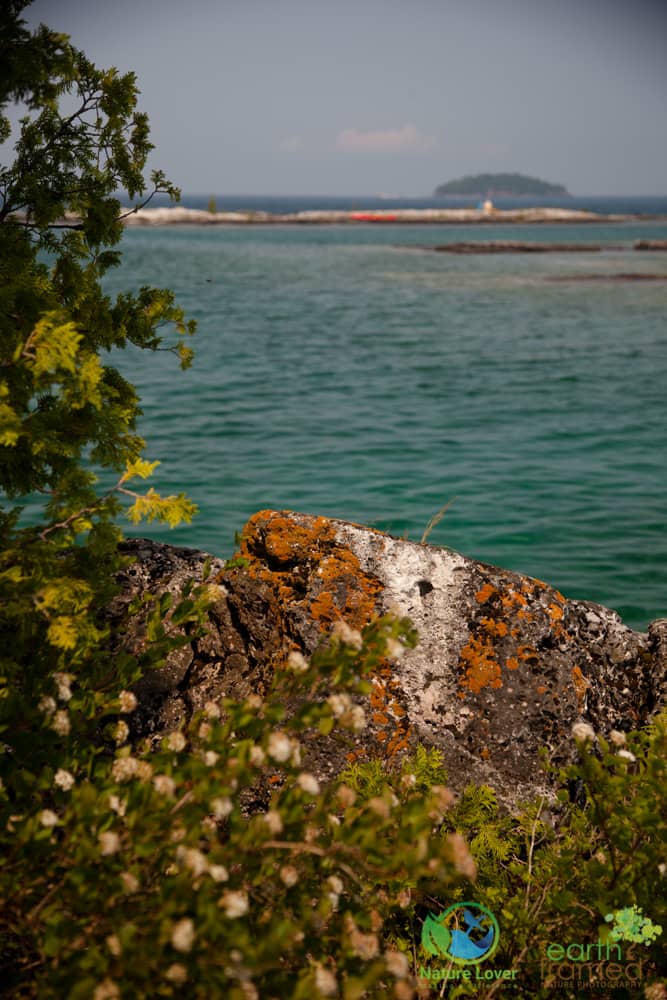
In the foreground you can see cedar branches, wildflowers and orange lichen on the eroded rocks. Off in the distance is a glimpse of Flower Pot Island, which is another place we have yet to visit. In order to get to the island you either have to have your own boat or take one over to the island. Most of the boats either do not allow dogs, only allow smaller dogs and/or have a limit to the number allowed per boat. Needless to say this has and will make it almost impossible for us to visit the island. However, we would rather have our dog with us than visit someplace, so it’s a small sacrifice.
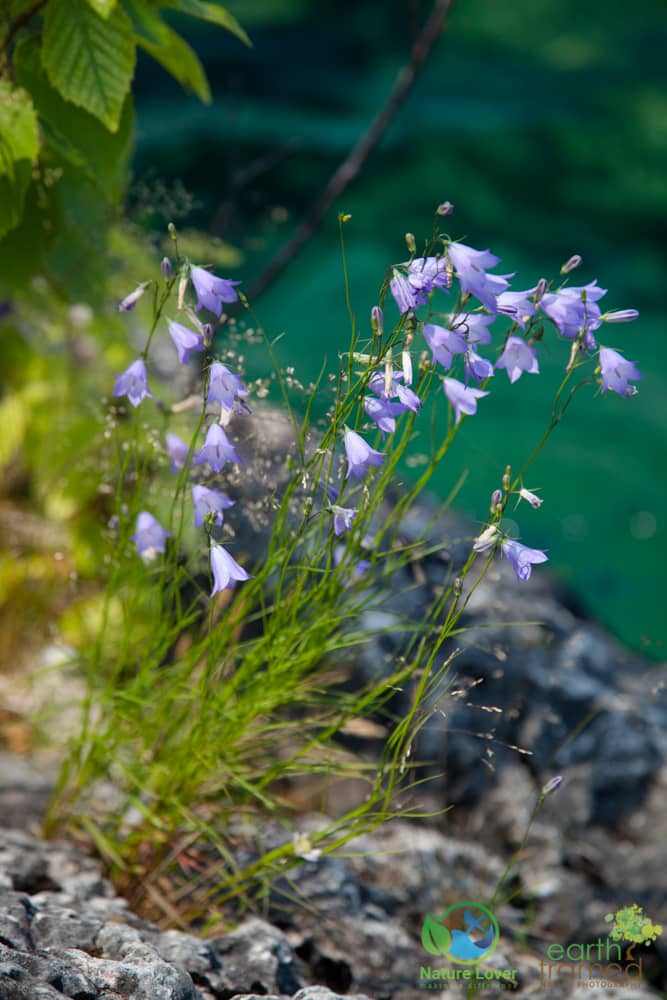
There gorgeous blue bells were somehow clingy to the rocks along the coast. How such fragile wildflowers can not only grow here but florish is astonishing. 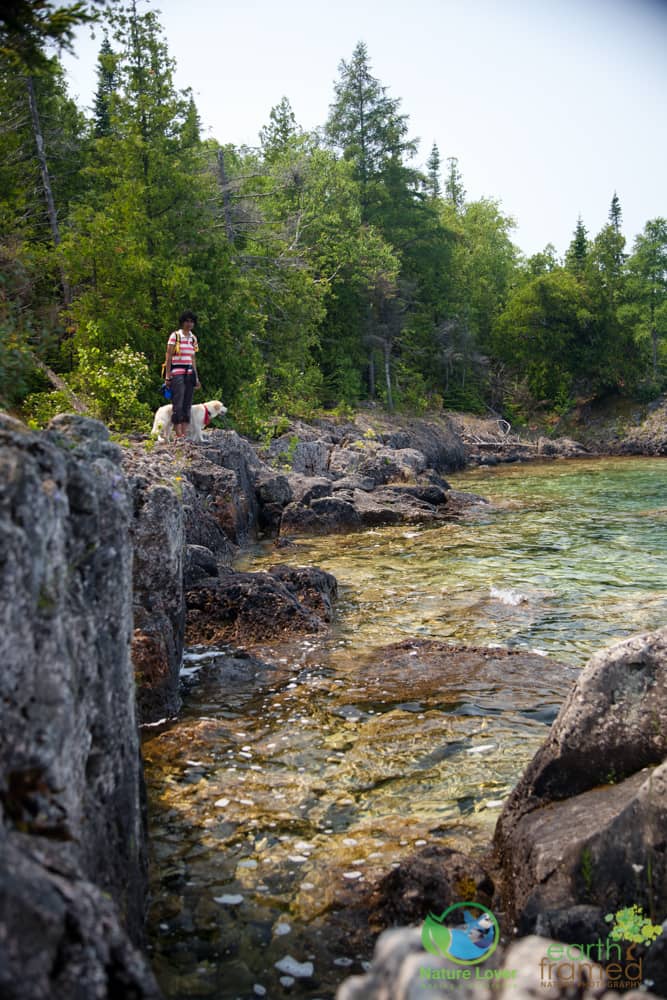
The waters of Georgian Bay are clear and cold. The shoreline is rugged and beautiful. For those of you unfamiliar with Georgian Bay, it is a large bay of Lake Huron and is located in Ontario, Canada. It is so big that some people actually refer to it as the “sixth Great Lake”.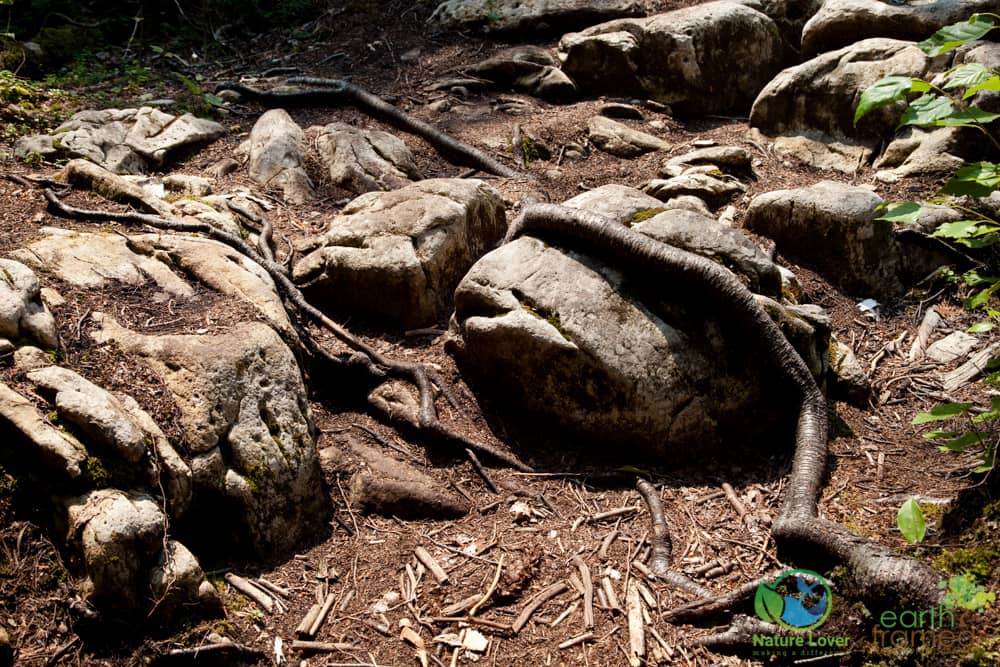 In the Canadian Shield, due to the lack of soil depth, trees must not only have a shallow root system, they also often have to go up and around rocks and boulders. Luckily, the rocks actually act as anchors to help trees stay as upright as possible in such a harsh growing environment.
In the Canadian Shield, due to the lack of soil depth, trees must not only have a shallow root system, they also often have to go up and around rocks and boulders. Luckily, the rocks actually act as anchors to help trees stay as upright as possible in such a harsh growing environment.
This is definitely a great trail to hike if you are up near Tobermory. You can also do more of the Bruce Trail or hike Cyprus Lake Trail, Emmet Lake Road, Singing Sands or take a boat over to Flower Pot Island.
Sources:
Barry, James P. (1995) [1968]. Georgian Bay: The Sixth Great Lake. Boston Mills Press. ISBN 978-1-55046-172-5. OCLC 37863060


